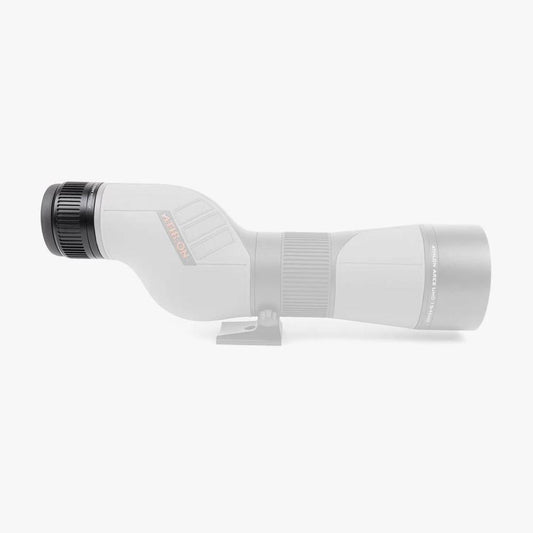

Athlon Ares G2 UHD 22x Ranging Reticle Eye Piece with MIL Reticle is engineered for precision shooting, making it ideal for both experienced shooters and beginners. This eyepiece enhances target acquisition with its 22x magnification, delivering clear views of distant targets. The TSSR2 SFP MIL reticle simplifies range estimation and bullet drop calculations, allowing for quick assessments during competitive shooting events. Compatible with Ares 15-45×65 UHD Spotting Scopes, it provides a seamless upgrade to your shooting setup without the need for additional equipment.
Constructed from high-grade aluminum, the eyepiece is both lightweight and durable. Its rugged design withstands harsh conditions, making it suitable for outdoor use. Enhanced clarity ensures that you can see details even in low light, boosting shot accuracy. With a user-friendly interface, it allows for quick focus adjustments, adapting to varying environments effortlessly. Elevate your shooting performance with this essential piece of gear that combines functionality with ease of use.
Key Features:
- PRECISE AIMING enables instant target location, ensuring you hit your mark consistently.
- LIGHTWEIGHT DESIGN allows for easy portability, making it perfect for extended shooting sessions.
- COMPATIBILITY with Ares spotting scopes enhances your setup without extra costs.
- HIGH MAGNIFICATION at 22x provides clear viewing of distant targets, ideal for long-range precision.
- USER-FRIENDLY RETICLE simplifies calculations, catering to both novice and expert shooters.
- RUGGED CONSTRUCTION ensures durability, ready to withstand demanding conditions.
- ENHANCED CLARITY improves detail visibility, aiding shot accuracy in various lighting.
- QUICK FOCUS adjustment helps you adapt rapidly to changing environments, maximizing performance.
Technical Specifications Table
| Specification | Detail |
|---|---|
| Magnification | 22x |
| Lens Diameter | 65mm |
| Weight | 1.2 lbs |
| Dimensions | 12 x 4 x 4 inches |
| Material | High-grade aluminum |
What’s in the Box?
- Lens covers
- Padded case
- Neck strap
Customer Reviews
"Absolutely love this eyepiece! It makes it so easy to hit targets at long distances." - Sarah T.
"The clarity is unmatched! A must-have for any serious shooter." - Mike L.
FAQ
How does the MIL reticle work? The MIL reticle enables quick range estimation and bullet drop calculations, which aids shooters in making precise shots.
Can I use it in low light conditions? Yes, the Athlon Ares G2 provides enhanced clarity for viewing in various light environments, ensuring visibility.
Is it compatible with other scopes? This eyepiece is specifically designed for compatibility with Ares 15-45×65 UHD scopes, ensuring optimal performance.
How do I maintain it? Clean the lenses regularly with a lens cloth and store it in the padded case to protect it from damage when not in use.
What makes it different from other eyepieces? The Athlon Ares G2 combines high magnification with a user-friendly reticle, making it well-suited for both novice and experienced shooters.
Similar Models
Looking for more exceptional optics? Explore our complete Athlon collection, including models like the Athlon Ares 20-60x85 for incredible zoom capabilities and Athlon Midas 15-45x65 for optimal portability. Discover the perfect fit for your adventures today!
You May Also Like
Here’s some of our most similar products people are buying. Click to discover trending style.






